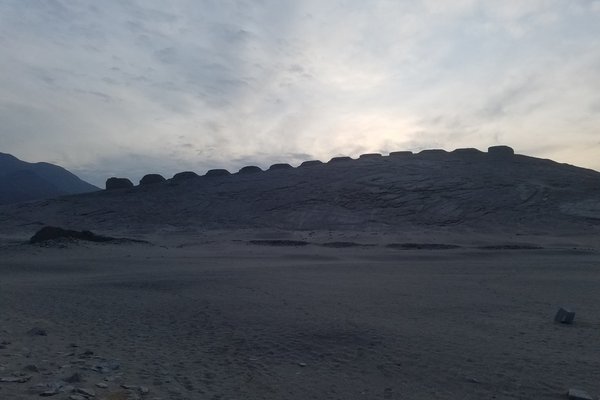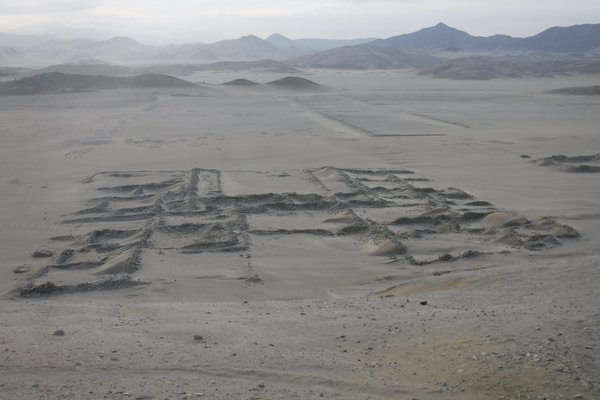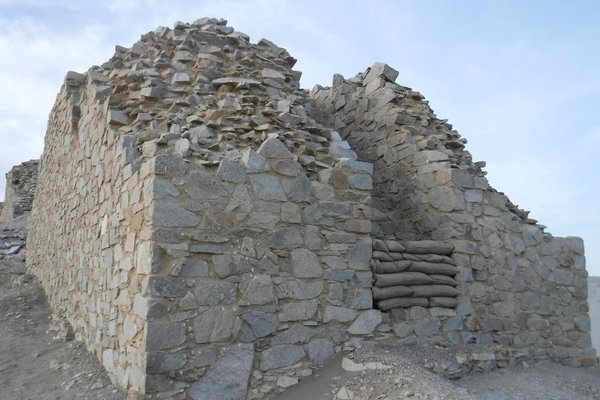Peru
Chankillo Archaeoastronomical Complex
The Chankillo Archaeoastronomical Complex is an archaeological site from 250-200 BCE with ritual and astronomical functions.
The most outstanding construction is a series of 13 stone towers built on the crest of a hill, allowing the date to be known on any given day and to follow the movements of the sun throughout its annual cycle. Its innovative nature and precision testify to the culmination of a long historical evolution of astronomical practice in this region.
Community Perspective: going at sunset or sunrise will mean that you can see the calendrical instrument yourself (if it isn’t cloudy). Best visited from the town of Casma; it might be hard to find on your own and a guided tour will add the needed background info.
Site Info
Official Information
- Full Name
- Chankillo Archaeoastronomical Complex (ID: 1624)
- Country
- Peru
- Status
-
Inscribed 2021
Site history
History of Chankillo Archaeoastronomical Complex
- 2021: Name change
- From "Chankillo Solar Observatory and ceremonial center" to “Chankillo Archaeoastronomical Complex” upon inscription (on the advice of ICOMOS).
- 2021: Inscribed
- Inscribed
- Type
- Cultural
- Criteria
- i
- iv
Links
- UNESCO
- whc.unesco.org
All Links
UNESCO.org
- whc.unesco.org — whc.unesco.org/
Community Information
- Community Category
- Archaeological site: Pre-Columbian
Travel Information
Recent Connections
-
Female Archaeologists
Rosa Fung - Archaeologist Rosa Fung exc…
-
Name changes
From "Chankillo Solar Observatory and c… -
Astronomy and Astrology
functioned as a calendrical instrument,…
Connections of Chankillo Archaeoastronomical Complex
- Individual People
-
-
Thor Heyerdahl
The towers had been known to travelers for centuries, the astronomical function of the towers was speculated famously by Thor Heyerdahl in his book Kon-Tiki of the 1940s (Wiki) -
Female Archaeologists
Rosa Fung - Archaeologist Rosa Fung excavated in Chankillo during the 1960s, with the collaboration of architect-conservator Víctor Pimentel. (AB Ev)
-
- Geography
-
-
Linear inscriptions
The Thirteen Towers are a row of thirteen cuboidal constructions built of stone and mortar along a low ridge roughly at the center of Chankillo. (Nomination Text, p. 17) The regularly-spaced thirteen towers of Chankillo were constructed atop the ridge of a low hill running near north to south, forming a "toothed" horizon with narrow gaps at regular intervals. To the east and west investigators designated two possible observation points. (wiki)See en.wikipedia.org
-
Andes
The Cerro Mucho Malo is part of the coastal foothills of the western chain of the Andes mountain range. (Nomination Text, p. 15) -
Desert Cultural Landscapes
The site exemplifies human interaction with a desert landscape and skyscape in a way that remarkably incorporates natural elements within the astronomical function, giving them a value similar to that of constructed elements. (Executive summary, p. 3-4)
-
- History
-
-
Qhapaq Nan (Inca)
(...) the presence of a section of Qhapaq Ñan (the Inka road) between the Casma Valley and the coastline, possibly constructed during the time of Chankillo, which would give this road a temporal extension of more than 1600 years. (Executive summary, p. 13) -
Pre-Inca cultures
The culture that produced Chankillo is called the Casma/Sechin culture or the Sechin Complex. (wiki) -
Formative stage
The dates obtained through dendrochronology and 14C analysis has defined Chankillo´s occupation between 250 and 200 B.C. (AB ev)
-
- Damaged
-
-
Destroyed during invasion
Chankillo and other structures of the Casma/Sechin culture were partially destroyed and their use abandoned in an apparent conflict about 100 BCE. (Wiki)
-
- World Heritage Process
-
-
Perfect Inscriptions
2021 -
Cultural landscape not recognized
The Nomination File and the AB Ev from IUCN (May 2020) refer to the site as a cultural landscape.
-
- Human Activity
-
-
Stone Quarries
Archaeological research has documented in several parts of the property the quarries used for the provision of stone, the main construction material, the lithic workshops, both at the same quarries and in specialized spaces, the accumulations of shaped stones in the process of transfer between the quarries and the constructions, the tools used in the construction, and the areas for discarding materials leftover from the construction. All this evidence points to the originality of the construction materials used in Chankillo. (Nomation Text, p. 90-91) -
Geoglyphs
A group of geoglyphs is found 700 m southwest of the Fortified Temple, another is 2.2 km away. They were created by piling up small fragments of dark green andesite from nearby dikes over a light gray sand layer. This technique was used to create simple figures of triangles, circles, concentric circles, and rectangles. (Nomination Text, p. 48-49)
-
- Constructions
-
-
Pillars
The Temple of the Pillars has pillared galleries. The pillars are found in rows of 4 to 16 and were decorated and contained slits forming a double-step motif. They supported a partial roof made from perishable local materials, such as cane, covered in mud. Archaeoastronomical analysis supports the suggestion that the pillars were designed for the projection of spectacular lights and shadows during the minutes following sunrise, orchestrated to cover the whole year. (Nomination Text, p. 41, 44, 51-52) -
Passage of the Sun
Chankillo is one of only two places in the ancient world known to have incorporated a complete solar horizon calendar, using its markers to track the progressive passage of the sun along the horizon throughout the entire solar year. And it is the only one where this was achieved on a monumental scale and where all the component elements of the instrument are still extant and functional. (Executive summary, p. 3)
-
- WHS on Other Lists
- Timeline
-
-
Built in the 3rd century BC
has defined Chankillo´s occupation between 250 and 200 B.C. (AB ev)
-
- Science and Technology
-
-
Archaeological potential
The Fortified Temple was abandoned for over a millennium before it was reoccupied. Late Intermediate Period occupants (1100-1470 AD) left human burials, graffiti on the surviving walls, offerings, and some possible constructions of ephemeral use. This occupation is dated between 1051 and 1286 AD. It is likely that there is much more evidence of the occupation of the area at this time in sectors not investigated within the Chankillo Monumental Archaeological Zone. (Nomination Text, p. 77) -
Astronomy and Astrology
functioned as a calendrical instrument, using the sun to define dates throughout the seasonal year (AB ev)
-
- WHS Names
-
-
Name changes
From "Chankillo Solar Observatory and ceremonial center" to “Chankillo Archaeoastronomical Complex” upon inscription (on the advice of ICOMOS).
-
News
No news.
Recent Visitors
Visitors of Chankillo Archaeoastronomical Complex
Community Reviews
Show full reviews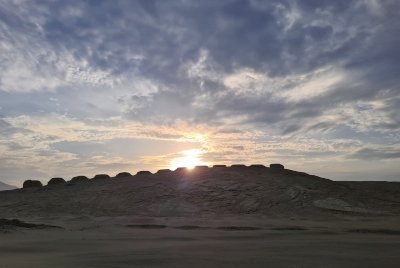
The Chankillo astroarcheological complex was a nice trip in the morning with a guide for me in order to see the sun rise between two of the thirteen towers. It's only a WHS since two years and it also feels like it's not that popular yet. Especially compared to other Peru WHS (like Machu Picchu :P). According to the guide there was actually big tourism going on until the pandemic and since then even despite the inscription tourism levels are low. We were for the sunrise for which one specific spots exists actually the only tourists in the whole site. Before we walked up to the towers and had a closer look at them even though there is nothing special to see except stone buildings. For walking up there I highly recommand hiking boots. On the way back down I saw my ankles breaking in my sneakers in front of my inner eye. The hill is a mixture of loose stones and a sand dune. In the parts with loose stones walking downhill was really tricky. We requested Aleko tours as all others in these reviews did so far, but it failed. We wrote with them and they only had time with a week anticipation. When we visited the office some old ladys said that the owner is out of office for another 2 weeks. But Aleko recommanded us Herbert with whom we did the tour. He was reliable, kind and had some local knowledge. Much more than we had …
Keep reading 0 comments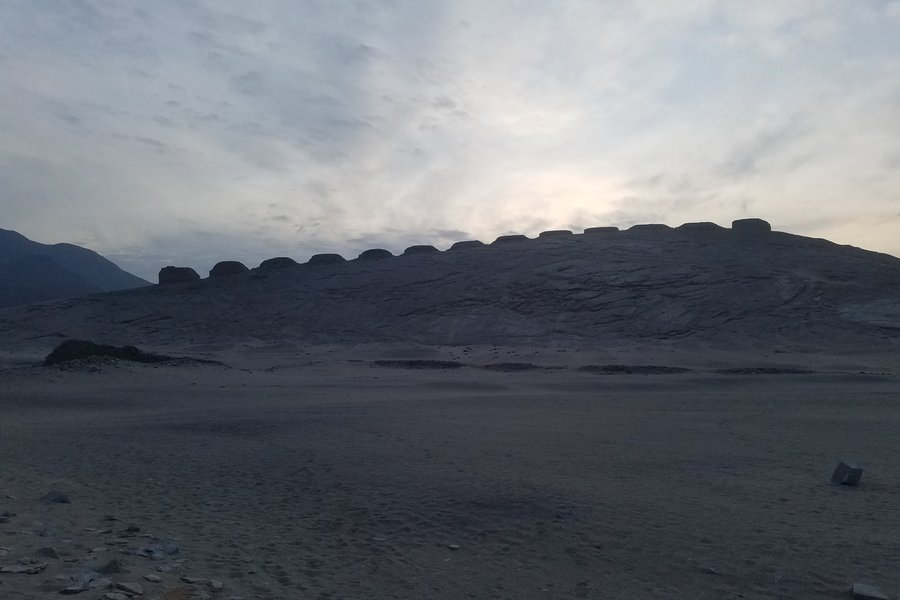
I visited Chankillo in February 2020. Although my visit was very similar to Lauren's, I believe this site deserves more than a single review. Like Lauren, I visited the site at sunrise, with the help of Aleka Tours.
Before 6am, they picked me up from my hotel in central Casma in a gleaming blue dune buggy perfect for driving through the desert of the Peruvian coast. I was guided by a Spanish-speaking archaeologist and an English-speaking guide. Although the presence of the two women made the tour more interactive and complete, my level of Spanish and the archaeologist's level of English would have allowed me to understand 95% of the tour. Please take note that the road leading to the site (AN-1306 / El Castillo on Google Maps) was closed by a chain and guarded by a man at the time of our visit (and this, despite the early hour!). My memory is hazy, but I think the guide was asked to pay a fee.
We started the tour at the ruins between the 13 towers and the concentric wall structure. A platform indicates where to stand to watch the sun rise and determine the time of year. The sky was clear during my visit and I could see the sun appearing between the towers. It is impressive to think that this site was built so long ago and that these people already had a fine mastery of astronomy. We then headed towards some stone walls, ruins of buildings at …
Keep reading 0 commentsLittle Lauren Travels
Chankillo Archaeoastronomical Complex
Chankillo Archaeoastronomical Complex (Inscribed)
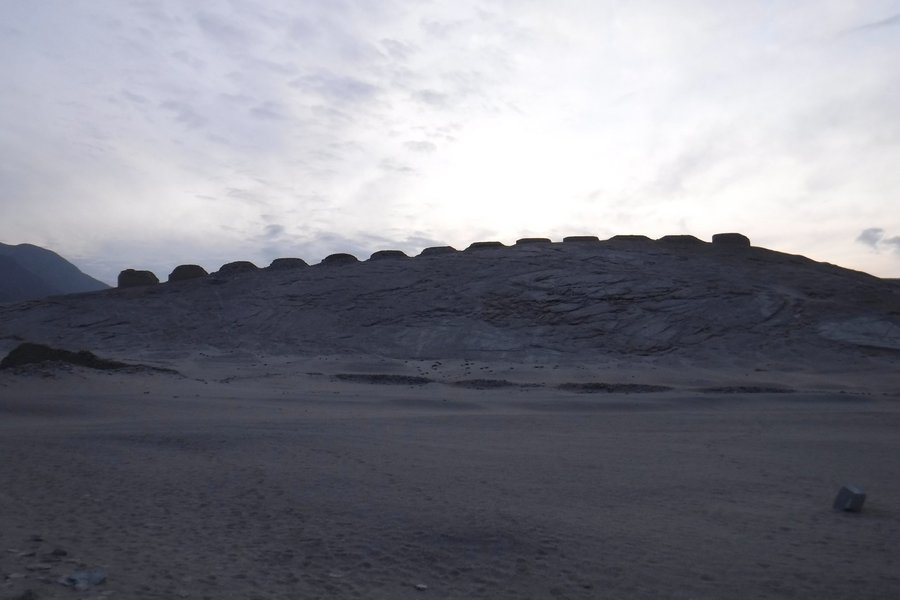
I made it a goal to visit all of the UNESCO sites in Peru and as many of the tentative sites as I could during a five-week trip in 2014. Of all of the sites, Chankillo was by far the most challenging to visit because of the lack of infrastructure and information online. When I saw that it's being put forward for a nomination in the near future, I figured it was time for a review. In general, the tourist infrastructure around Peru’s UNESCO sites is good compared to many places in the developing world, and so I hope the infrastructure around Chankillo has improved At the time I visited, albeit long before it was an inscribed site, there was no signage and no facilities
Chankillo is an astronomical complex in western Peru, about half way between Trujillo and Lima. It's claimed to be the oldest astronomical site in the Western hemisphere, at over 2000 years old. There are some ruins of various buildings, but the highlight of the sight is 13 notched towers (with twelve spaces in between) that were used to measure the place where the sun rises and sets on the horizon to determine the approximate date of the year. I highly recommend going at sunset or sunrise so you can see the phenomenon yourself. (Although I went at dawn, it was a cloudy day, so I didn't actually get to experience it.)
The site was not well marked, and so I went by a …
Keep reading 0 comments
